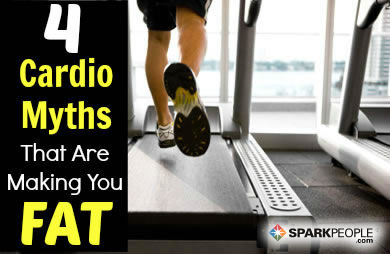|
If hearing the term "compression garments" calls to mind Grandma's not-so-stylish orthotic pantyhose, it's time to expand the definition. These days, it refers more to the fitted sleeves and socks that hug the legs of runners, walkers, weight lifters and other active folks, enticed by the promise of greater endurance and accelerated recovery. Often seen in neon colors and fun patterns, these functional garments can really brighten up a race course—but do they offer any real benefits beyond their fashion factor? How Do Compression Garments Work?In a nutshell, these products help to improve blood flow by applying pressure to the feet and lower legs, which accelerates the return of blood to the heart from these areas. "When blood flow is accelerated, so are the vital processes that depend on it—including oxygen supply to your muscles," explains ultrarunner and sports coach Matt Fitzgerald. "This can result in better performance and removal of metabolic wastes after exercise for quicker recovery." According to Fitzgerald, the key factor is whether or not a particular product puts the right compression at the right places. "If the pressure is too low, you might as well be wearing a regular sock," he says. "But if it’s too high, it will act like a tourniquet, squeezing so hard that the blood flow is reduced rather than increased." He likens it to a tube of toothpaste: A graduated compression sock is like squeezing the tube from the bottom to get the contents to come out the top, while a non-graduated product is like squeezing the tube in the middle. So, what's the right amount of pressure? The pressure applied by compression garments is measured in the same unit as blood pressure itself: milliliters of mercury (mmHg). Fitzgerald says the optimal compression range is 20-30 mmHg, which is classified as "medical grade." It’s also important also that the pressure is graduated, meaning that it's highest at the foot and lowest at the calf, which directs blood flow upward. A true graduated compression sock is narrower at the ankle than at the calf. Who Benefits From Compression Socks and Sleeves? Running coach Kyle Kranz is an advocate of compression socks for runners and other athletes as a means of speeding up recovery after a fatiguing workout. He says they're especially helpful for people with calf issues, as the compression may reduce the muscle oscillation (movement) while running. Frequent travelers may also use compression to make flying more comfortable. When sitting on an airplane for an extended period of time, passengers are more likely to develop deep-vein thrombosis (DVT), which causes blood clots in the legs that can lead to pain, swelling and redness. Some research has shown that those who wear compression stockings experience fewer symptoms of DVT compared to those who don’t wear the stockings. Choosing the Right Compression Garment With so many brands and styles to choose from, how do you know which sleeve or sock to try? Kranz, who prefers the TIUX brand, points out that there's an important distinction between socks and sleeves. "Compression socks are better for recovery as they compress all the way down the foot, and tights are even better as they cover even more body area," he says. "Since sleeves stop at the ankle, they are not as ideal for recovery, but they can be more helpful for runners since they let you use your normal socks." Sizing may be a bit different than traditional socks. Instead of basing it on your shoe size, Fitzgerald says to consider the circumference of the calf rather than the length of the foot when choosing compression socks. He also recommends looking for socks and sleeves with a higher thread count, as they will apply compression more precisely than products with fewer threads. Although compression socks and sleeves may not work miracles, they can help to improve blood flow and provide extra stability to the lower-body muscles. Whether you're a long-distance runner, nurse, frequent traveler or food service worker, a little squeeze could make your workout—or your workday—more comfortable and productive. Do you ever wear compression socks? Have you noticed any benefits? |
Popular EntriesRelated Entries
More From SparkPeople
|

.jpg)

















.jpg)



